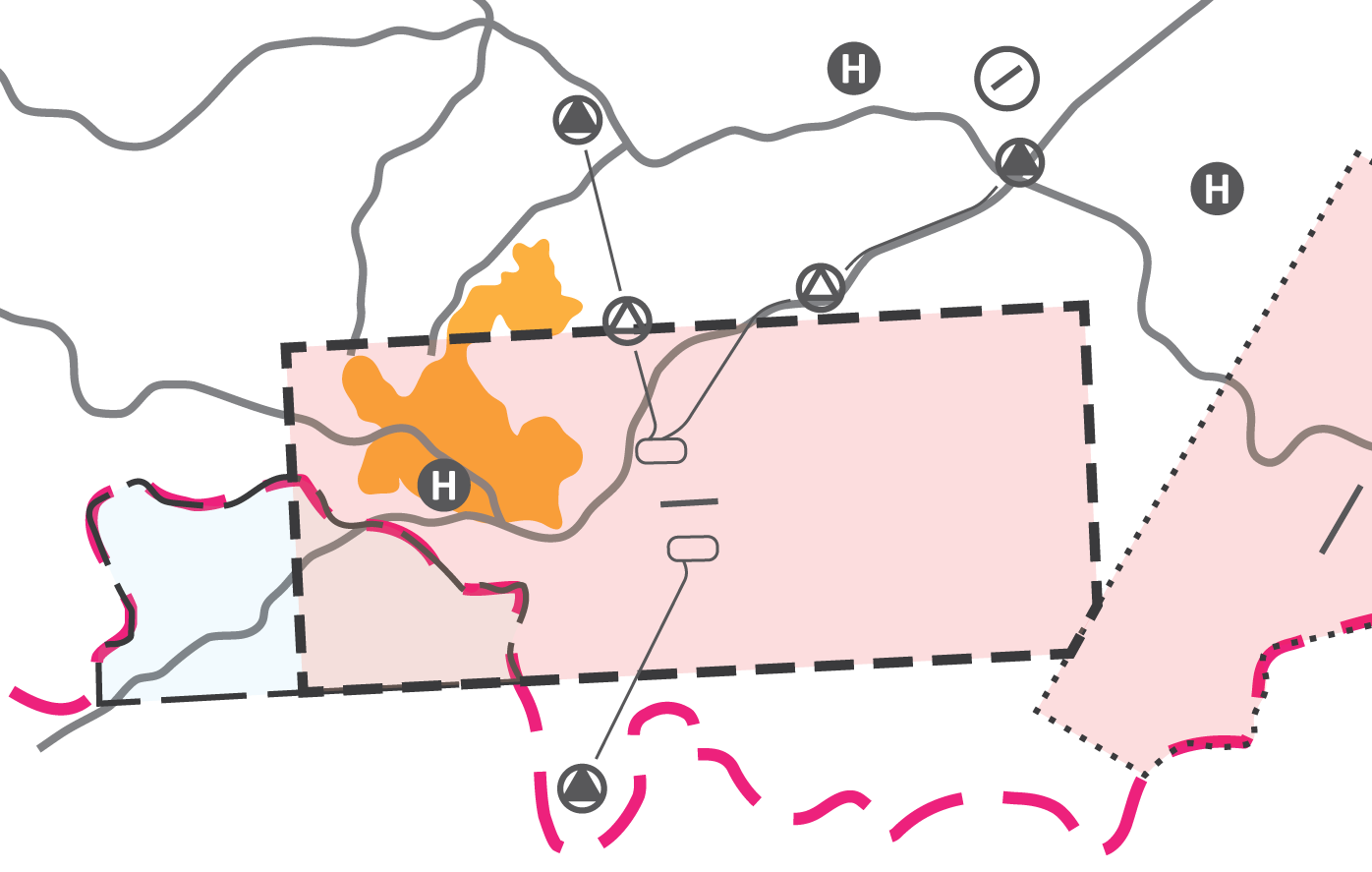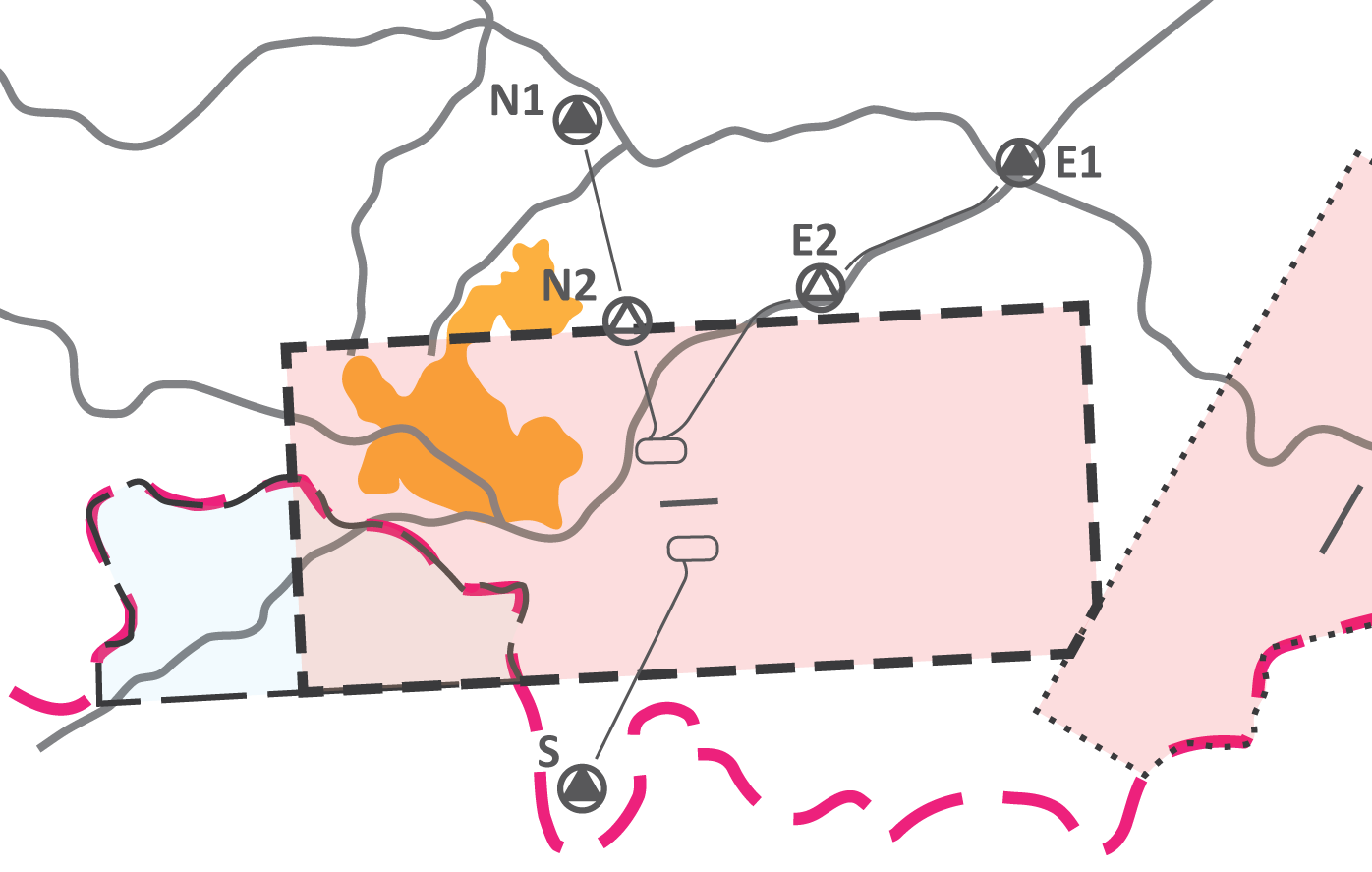Tower
Saarbrücken Tower is responsible for all enroute and startup clearances, ground movements, the runway, and all traffic within the CTR Saarbrücken. When necessary, Saabrücken Ground can be opened to reduce the workload of Saarbrücken Tower, taking over responsibility for enroute and startup clearances as well as ground movements at the airport.
| Station | ID | Login | Frequency | Remarks |
| Ground | DRG | EDDR_GND | 118.555 | relief station for DRT |
| Tower | DRT | EDDR_TWR | 118.355 | -- |
Enroute Clearance
Routing restrictions
| Via | Restrictions |
| EDDR | non-RNAV1 equipped aircraft only |
| GTQ (Grostenquin) |
-- |
| IXWIB | -- |
| TOMPI | -- |
SID assignment
Controllers shall use the vSID plugin to assign the correct SID and initial climb.
The GTQ#M SID may be manually assigned if the pilot reports unable to comply with the climb gradient of the GTQ#S SID.
Omnidirectional departures
Omnidirectional departures shall only be assigned to non-RNAV1 equipped aircraft and require coordination with PFA before the clearance can be issued.
IFR training flights
IFR training flights planning to conduct practice maneuvers, e.g. repeated approaches, at EDDR, EDFH, EDRZ, ETAD, ETAR, or ETSB or within sectors EIF or PFA always require a startup release by PFA.
Ground operations
Saarbrücken has very limited apron space. The airport can only accommodate six aircraft up to code C as well as a number of smaller general and business aviation aircraft. Due to this, it may occasionally be necessary to coordinate delays for inbound aircraft when there are a lot of aircraft at the airport simultaneously.
Parking positions
Parking positions N1 thru N5 and S1 thru S5 are the same parking positions respectively, they are differentiated only be the direction from which they are entered. Positions labeled N (with the exception of N6) are entered via TWY N (from the North, facing South) while positions labeled S are entered via TWY S (from the South, facing North).
The GAT is located in the West of the airport between TWYs B and L.
All parking positions at the airport are taxi-out positions.
Runway operations
Operating modes
There is no preferred operating direction at EDDR and the active operating direction should be chosen based on prevailing weather and traffic conditions. Regardless, tailwind conditions shall never exceed 5 kts.
Only RWY 26 is equipped with an ILS, however, the airport is not equipped nor certified for low visibility operations.
During 08 operations, the RNP approach should be used, and during 26 operations, the ILS Z approach should be used (the ILS Y is only used for aircraft that are unable to comply with the RNAV-requirements of the ILS Z missed approach).
Departure releases
A departure release by PFA is required in the following situations:
- omnidirectional departures
- first departure after a missed approach
- departure planning to conduct practice maneuvers at EDDR, EDFH, EDRZ, ETAD, ETAR or ETSB or within the EIF or PFA sector
- whenever requested by PFA to accommodate operations at EDRZ and/or ETAR
Reduced runway separation
RRS minima may be applied by Saarbrücken Tower, according to the following table:
| Runway |
preceding CAT 1/CAT 2 succeeding CAT 1 |
preceding CAT 1/CAT 2 succeeding CAT 2 |
preceding CAT 3 succeeding CAT 1/CAT 2/CAT 3
|
| 08/26 | 600m | 1500m | N/A |
CTR operations
Airspace
 The EDDR CTR extends up to 3600ft and directly borders the EDRZ RMZ in the East. Additionally, the Saarbrücken hospital heliport is located within the CTR, as well as two hospitals and a small airfield directly North of the CTR.
The EDDR CTR extends up to 3600ft and directly borders the EDRZ RMZ in the East. Additionally, the Saarbrücken hospital heliport is located within the CTR, as well as two hospitals and a small airfield directly North of the CTR.
Various highways cross the CTR or run close to it and the city of Saarbrücken is partially located within the CTR. Part of the CTR is located in French airspace alongside a small TMZ without a frequency monitoring requirement.
There are three VFR routes for entering and exiting the CTR, made up of a total three compulsory reporting points and two optional reporting points with one VFR holding North and South of the field, respectively
Reporting points

| Reporting point | Location |
| Echo 1 | highway intersection A6 & A8 |
| Echo 2 | highway A6 exit Rohrbach |
| November 1 | highway A8 exit Friedrichsthal |
| November 2 | Rentrisch village |
| Sierra | Sitterswald village |
Labels for all reporting points can be displayed in EuroScope via a TopSky plugin map shortcut: Alt + V
Heliports & other airfields
 The hospital heliport of the Saarbrücken Klinikum is located within the CTR, just North of the extended centerline, and requires pilots to contact DRT for clearance.
The hospital heliport of the Saarbrücken Klinikum is located within the CTR, just North of the extended centerline, and requires pilots to contact DRT for clearance.
Additionally, the hospital heliports of Neunkirchen Staedt Klinikum and Homburg Saar Uniklinik as well as the small grass field of Bexbach (EDRX) are located just North of the CTR.
Zweibrücken (EDRZ), which has IFR procedures and thus an RMZ and AFIS, is located just West of the CTR.
Labels for all heliports can be displayed in EuroScope via a TopSky plugin map shortcut: Alt + H
